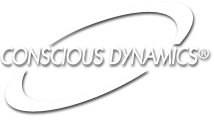|
Pre-Reading
Make questions of these headings. Do questions arise for you about the contents of each of these segments? Are you aware of things you already know about the topics? Are there questions you hope the author discusses in these segments? This completes level one. You can do another level using the same page or by creating a new "map" for each of the major headings that are on the outside circles of your first map. Change the themes in each circle into questions. This completes level two. You can take it another level and make each part or subsection of the book into a page with chapters surrounding. (Don't convert the titles to questions in these sections, at this time. It will be more helpful to do so closer to the time you are going to actually read the segment. But feel free to do so if you are on a roll with this. Don't forget the Appendices or Afterword. Having done these two activities, you already have a pretty good idea of what the book is about. You probably have interest in it. You have questions. You have some idea that you might know some things already about the topic. Most importantly, you have intentionally and consciously begun to create a space for the content in your own data banks and integrative systems. You are letting your mind be shaped some by the text. Pre-reading - © 2001 Mary Rees Contemplative Study Compilation - © 2007 Mary Rees |

Contemplative Study